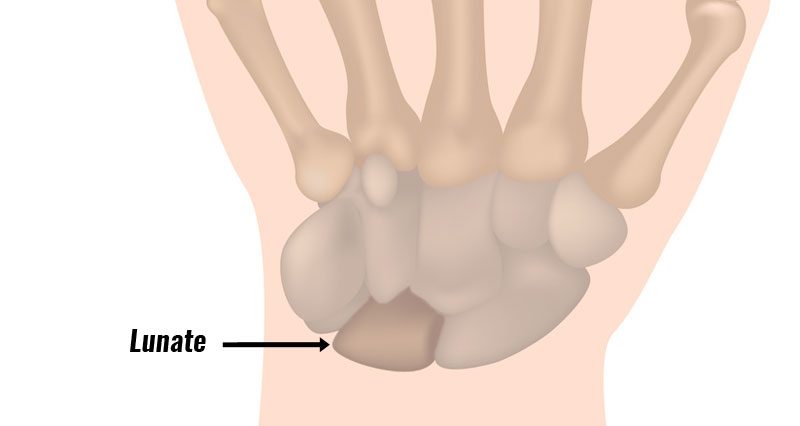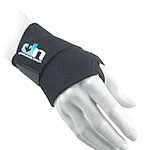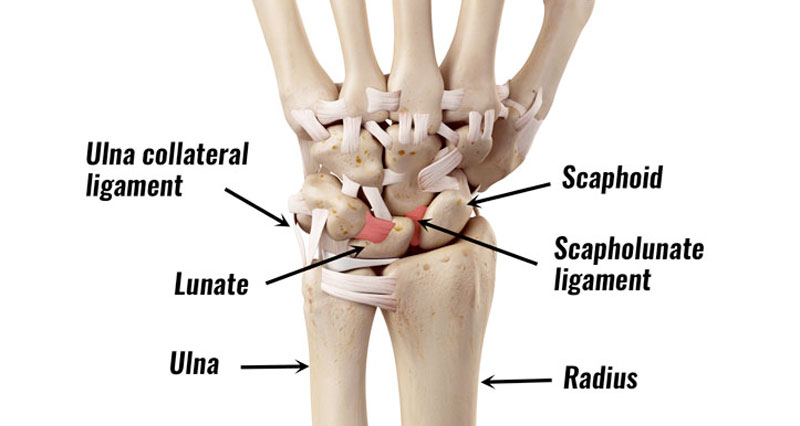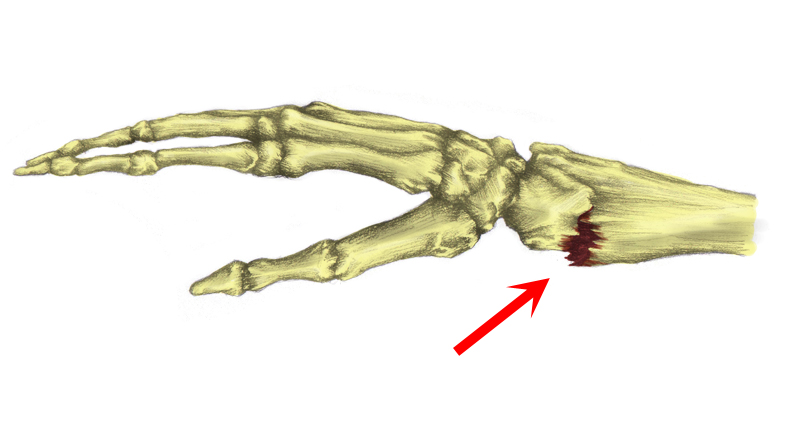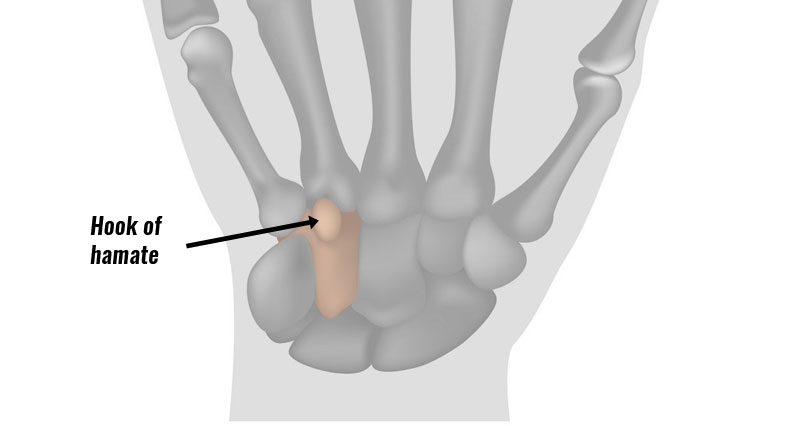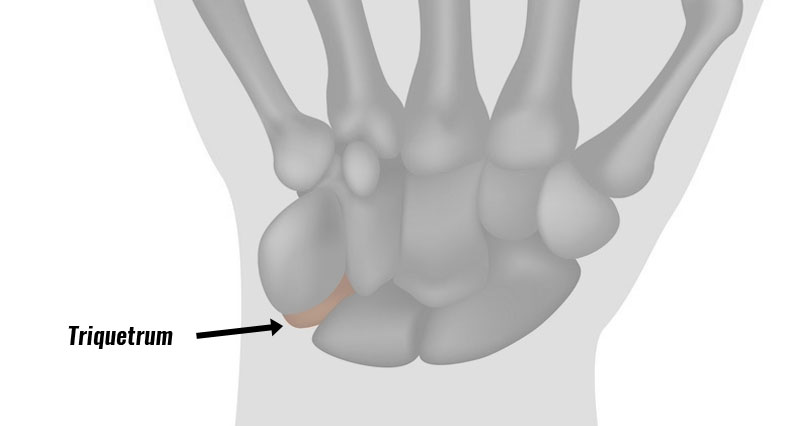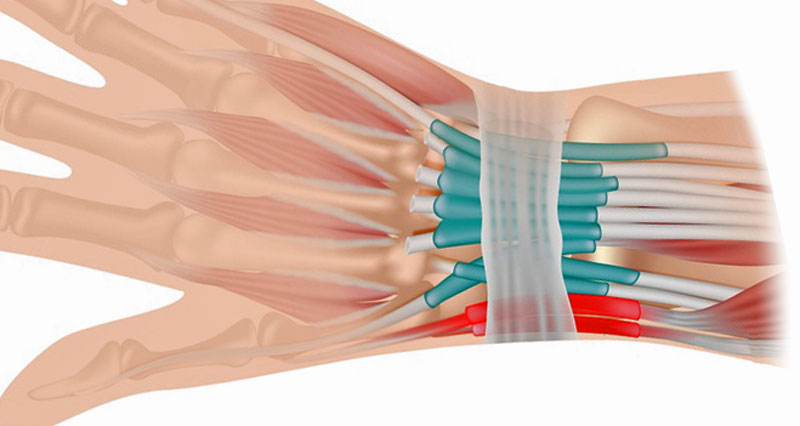Kienbock disease is necrosis of the lunate bone in the wrist due to poor or restricted blood supply. It is more common in adult males but also affects young gymnasts.
Symptoms
Symptoms of Kienbock disease include:
- Gradual onset wrist pain which becomes progressively worse
- Swelling on the back of the wrist
- Tenderness pressing in on the back of the wrist
- Limited or restricted wrist mobility
MRI scan diagnosis is controversial in the early stages of the disease because overuse stress reaction injury of the lunate bone appears similar.
Anatomy
The Lunate is one of the nince carpal bones in the wrist. Located on the little finger side when looking at the back of your wrist. It is adjacent to the Scaphoid.
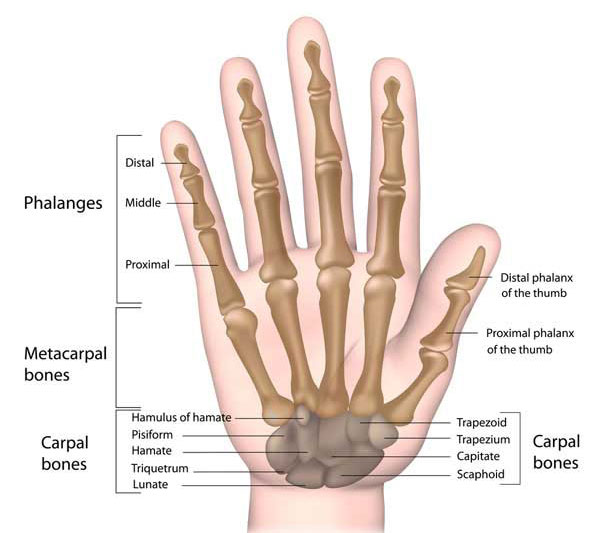
What causes Kienbock disease?
Overuse or repetitive microtrauma is the most common cause. It is most common in adult males, although it also occurs in young gymnasts.
Treatment for Kienbock disease
Treatment is either surgical or conservative (without surgery). Whether you need surgery or not depends on how far the disease progresses and your level of function.
Conservative treatment
Conservative treatment involves long-term immobilisation in a cast. However, this is not particularly effective in preventing progression once Kienbock disease is diagnosed. Therefore, it is essential you have an accurate diagnosis and it has not been confused with an overuse ‘stress reaction’ of the lunate bone.
If your injury is a simple stress reaction then active rest is likely to be effective. This means avoiding high-impact exercise on your wrist. You can do other exercises though but avoid loading your wrist.
It is important Kienbock disease is diagnosed within 3 months of symptoms occurring. Overall, the evidence for effective treatment and Kienbock’s disease is controversial.
References & further reading
- Herzberg G, Mercier S, Charbonnier JP et al. Kienböck’s disease in a 14-year-old gymnast: a case report. J Hand Surg Am 2006;31(2):264–8.
